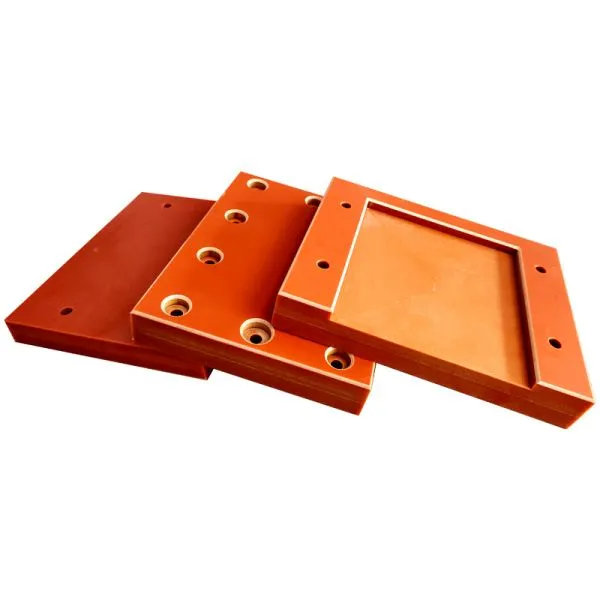The Historical Significance of Bakelite and Its Initial Advantages
Bakelite's Revolutionary Impact on Early 20th Century Industry
Bakelite's invention marked a pivotal moment in the history of materials science. As the world's first fully synthetic plastic, it opened up a realm of possibilities previously unimaginable. Industries ranging from electronics to automotive manufacturing eagerly embraced this versatile material. Bakelite's ability to be molded into various shapes and its excellent electrical insulation properties made it an instant favorite among manufacturers.
Early Advantages of Bakelite Sheets and Boards
Bakelite sheets and boards quickly became indispensable in numerous applications. Their high strength-to-weight ratio, resistance to electricity, and relative affordability compared to traditional materials like wood or metal made them ideal for use in electrical components, automotive parts, and consumer goods. The material's heat-resistant properties also contributed to its widespread adoption in kitchenware and industrial machinery.
Bakelite's Role in Shaping Modern Manufacturing Processes
The introduction of Bakelite not only revolutionized product design but also transformed manufacturing processes. The ability to mass-produce complex shapes through molding techniques paved the way for more efficient and cost-effective production methods. This shift in manufacturing capabilities played a crucial role in the rapid industrialization and technological advancements of the early 20th century.
Inherent Limitations of Bakelite as a Material
Brittleness and Lack of Flexibility
One of the most significant drawbacks of Bakelite is its inherent brittleness. While Bakelite sheets and boards offer excellent strength in certain applications, they are prone to cracking or shattering when subjected to impact or stress. This lack of flexibility limits their use in environments where materials need to withstand sudden shocks or repeated flexing. Modern plastics and composites have largely surpassed Bakelite in terms of impact resistance and flexibility, making them more suitable for a wider range of applications.
Heat Sensitivity and Thermal Limitations
Despite its initial reputation for heat resistance, Bakelite's thermal properties fall short of many contemporary materials. Bakelite boards and sheets can degrade or decompose when exposed to high temperatures over extended periods. This thermal sensitivity restricts their use in applications involving extreme heat or rapid temperature fluctuations. Industries requiring materials with superior heat resistance have increasingly turned to advanced polymers and ceramics that can withstand more demanding thermal environments.
Color Limitations and Aesthetic Constraints
Bakelite's color palette is notably limited compared to modern plastics. The material typically comes in dark, muted colors like brown, black, or dark green. This restricted color range can be a significant disadvantage in industries where aesthetics play a crucial role. Additionally, Bakelite tends to discolor or darken over time when exposed to sunlight or certain chemicals, further limiting its long-term visual appeal. In contrast, contemporary materials offer a vast array of color options and better color stability, providing designers and manufacturers with greater creative freedom.
Environmental and Health Concerns Associated with Bakelite
Non-Biodegradability and Environmental Impact
As environmental consciousness grows, Bakelite's non-biodegradable nature has become a significant concern. Bakelite sheets and boards, like many early plastics, do not break down naturally in the environment. This persistence leads to long-term pollution issues when Bakelite products are discarded. Unlike some modern plastics that can be recycled or biodegraded, Bakelite's thermoset structure makes it particularly challenging to recycle or repurpose, contributing to the growing problem of plastic waste in landfills and oceans.
Potential Health Risks in Manufacturing and Usage
The production of Bakelite involves the use of formaldehyde, a known carcinogen. While the finished Bakelite product is generally considered safe, the manufacturing process can pose health risks to workers if proper safety measures are not implemented. Additionally, when Bakelite is subjected to high temperatures or begins to degrade, it can release harmful fumes. This potential for toxic emissions has led to increased scrutiny and regulation in industries where Bakelite is still used, particularly in enclosed or high-temperature environments.
Challenges in Safe Disposal and Recycling
The disposal of Bakelite products presents significant challenges. Unlike thermoplastics, which can be melted and reshaped, Bakelite's thermoset nature means it cannot be easily recycled through conventional methods. Incineration of Bakelite can release toxic gases, making it an unsuitable option for disposal. As a result, most Bakelite waste ends up in landfills, contributing to long-term environmental issues. The difficulty in safely disposing of or recycling Bakelite has prompted many industries to seek more environmentally friendly alternatives that align with modern sustainability goals.
Conclusion
While Bakelite's historical significance cannot be overstated, its limitations in the modern world are increasingly apparent. The brittleness, thermal sensitivity, and environmental concerns associated with Bakelite sheets and boards have led to a decline in their use across various industries. As material science continues to advance, more versatile, durable, and sustainable alternatives have emerged, offering superior performance in many applications. Understanding these disadvantages is crucial for manufacturers and engineers as they navigate material choices in an era that demands both innovation and environmental responsibility.
Contact Us
For more information about modern insulating materials that offer superior performance and sustainability, please contact us at info@jhd-material.com. Our team of experts is ready to help you find the ideal solution for your specific needs.






